Spiders
After the insects, spiders (belonging to the arachnid order Araneae) are probably the most varied group of animals on the island. I would guess that the number of species is in the dozens, but to my knowledge, a formal survey of spider diversity on the island has not yet been done.
The spiders of St. Martin have a wide diversity of hunting techniques and seem to occupy almost every type of habitat on the island, from scrubland to dense forest to human habitations.
The most visible species are included here in some detail, while other species are included with photographs and identification where available. Future field research on St. Martin has been planned and will hopefully shed additional light on the spider diversity of the island.
Silver Argiope (Argiope argentata) and Banded Garden Spider (Argiope trifasciata)
The silver argiope is very common on St. Martin. In scrubland areas, it can be almost impossible to walk between any two nearby bushes without walking through one of their webs. The upperside of this spider is silvery white in front and dark with white markings in back. The underside is dark with yellow markings, and the legs are typically banded in black, yellow and orange.
An orb-weaving spider of the family Araneidae, it weaves large webs, sometimes reinforcing the center with an x-shaped group of zig-zagging lines. Young individuals may weave webs in grass with irregular reinforcement in the center. I have also seen smaller individuals in webs created at the edge of larger webs.
When approached, they typically run towards one of the anchor points of their web. The females can be quite large, over three centimeters in body-length, while the males don’t exceed two centimeters. The bite of this spider is reported as being painful and itchy for an hour or so, but despite walking through hundreds of webs I have not yet been bitten.
The banded garden spider is a closely related species, similar in most respects, but the top of its abdomen is banded. It is widely distributed around the world, but much less common on St. Martin than the silver argiope.
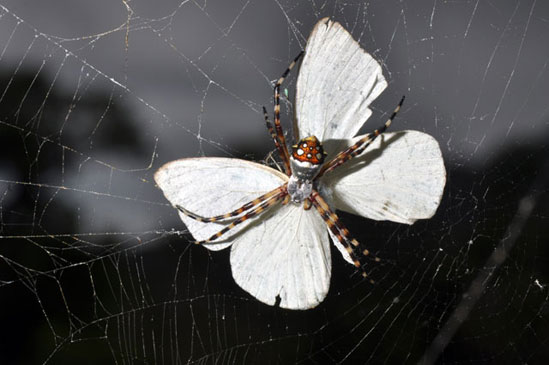
The silver argiope is typically seen in the center of their large web. In this case, it has recently caught a great southern white.
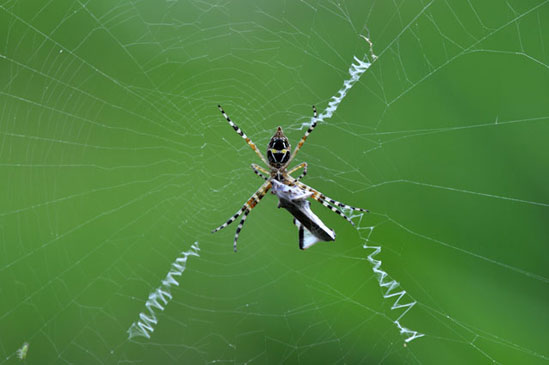
While most webs seem to lack the distinctive x-shaped reinforcement, it may be present or partially present on some silver argiope webs.
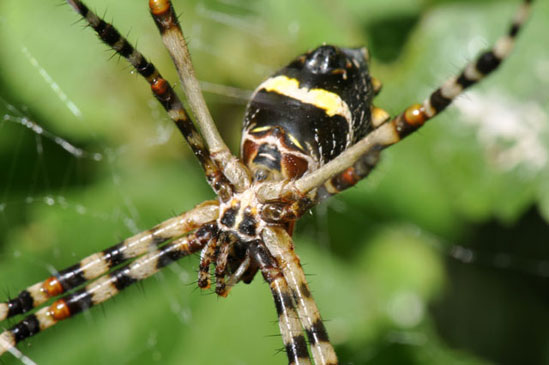
A detail of the underside of the silver argiope shows a thick yellow band on a mostly black abdomen.
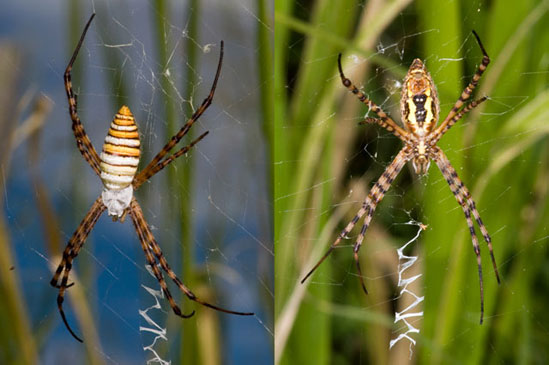
Aside from its banded abdomen, the banded garden spider closely resembles the more common silver argiope. The top view is on the left and the bottom view on the right. The underside features two yellow lines on either side of two pairs of small white dots.
Spiny-backed Orbweaver (Gasteracantha cancriformis)
This spider, also referred to as the crab spider and many other combinations of crab, spiny and orbweaver, is quite common on the island and inhabits both scrubland and forested areas. It is also quite variable in color and markings.
This spider is typically identified by the presence of six spines on the abdomen, but on St. Martin typically only four are visible. There are a variety of different color variations, the most common being red-orange and yellow and black and white. In North America, which makes up the bulk of its range, there are also a variety of color variations, but typically all six spines are visible.
Although its webs are quite large, the spider itself is small, less than a centimeter in length. These spiders typically live only shortly after reproducing. Males of this species are much smaller than females. One may easily identify their webs because the outer support lines are reinforced at regular intervals, giving the appearance of a dotted line along the perimeter of the web.
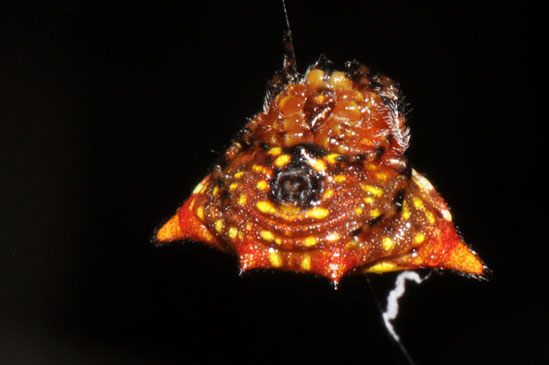
The underside of a red and yellow individual shows the four visible spikes and a typical pattern of yellow spots on a red background.
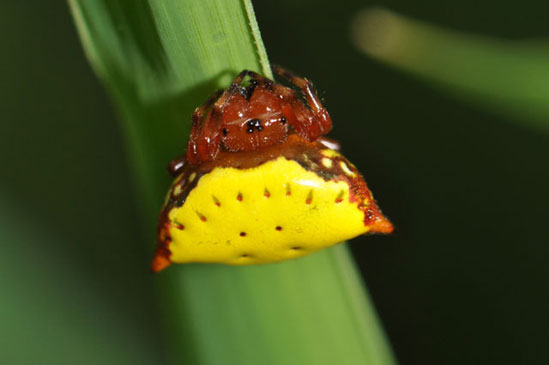
A typical red and white specimen. This is probably the most common color variant on the island.
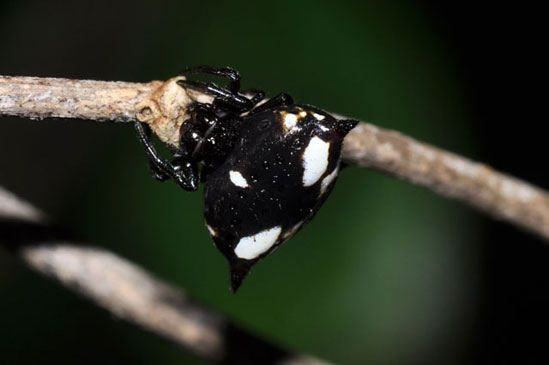
Black with white spots is a relatively less common color variant. The large differences in color and pattern are quite striking for a single species.
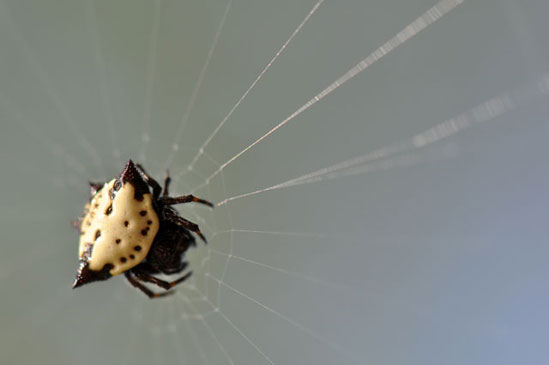
Black with a white, cream or yellow back is a relatively common variant on the island, and similar in pattern to the yellow and red variant.
Gray Wall Jumper (Menemerus bivittatus) and Pantropical Wall Jumper (Plexippus paykulli)
These jumping spiders, particularly the gray wall jumper, are exceedingly common around human habitation, and I typically have at least a dozen in and around my apartment at any given time. These spiders do not spin webs, but feed by attacking their prey on foot. In most cases, they are not particularly bothered by human presence, and this is particularly true when they are devouring a fresh kill.

The male pantropical wall jumper has a brown and white striped abdomen which features a light stripe down the middle, essentially the opposite pattern from the male gray wall jumper.
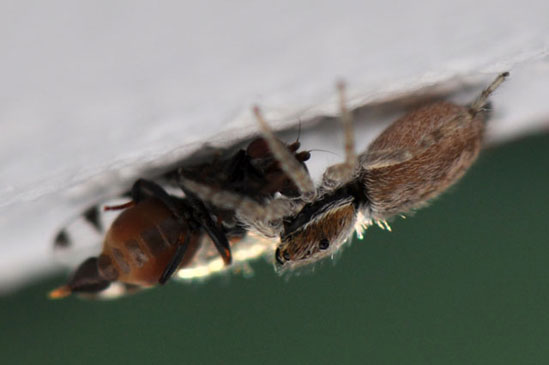
The female pantropical jumper, seen here with a freshly-caught fly, is generally a darker brown with some lighter markings on the top of the abdomen.
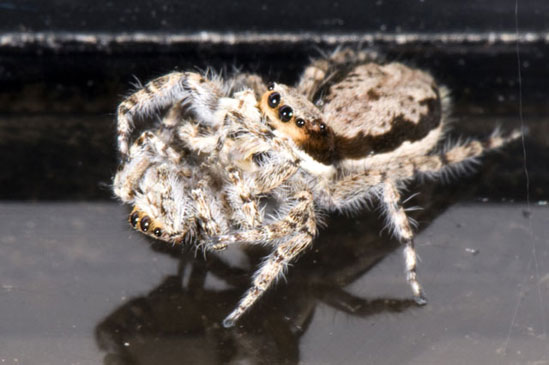
If food is scarce, cannibalism is an option for the gray wall jumper, particularly if you are a large female. The four large, front-facing eyes are seen clearly. Additional eyes are on the sides of the head for a wider field of view.
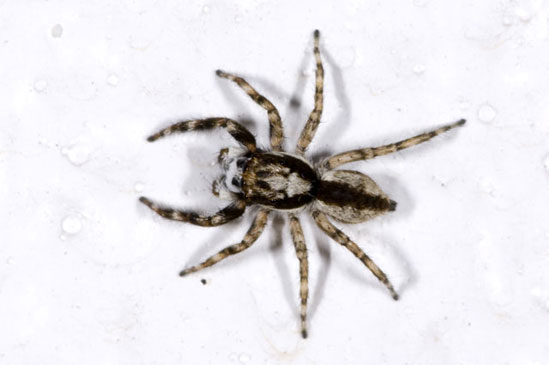
The male gray wall jumper is a light brown with a dark stripe running down the abdomen.
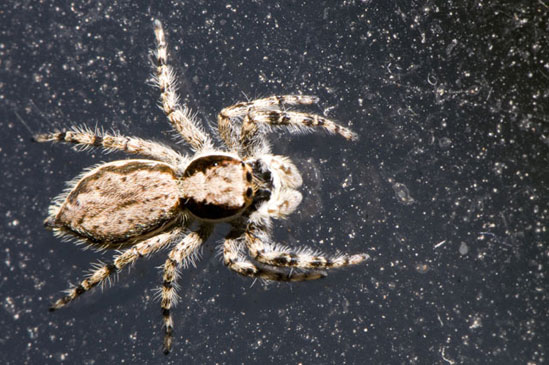
The female gray wall jumper is essentially the opposite of her male counterpart, light brown with dark stripes running down either side of the abdomen.
Additional Spiders
The admittedly incomplete selection of spiders on the following pages is meant to serve as a starting point for understanding the tremendous variety and great beauty of these creatures.
It may be worth noting that many totally unrelated spiders are referred to as crab spiders because they either look or walk like crabs. Conversely, various crabs are referred to as spider crabs. There is no taxonomic significance to these common names.

The brown widow (Latrodectus geometricus), a cousin of the infamous black widow, rests inside a silken pouch. The venom of this spider is of comparable toxicity to that of the black widow, but the bite is typically not painful, perhaps because little or no venom is injected.
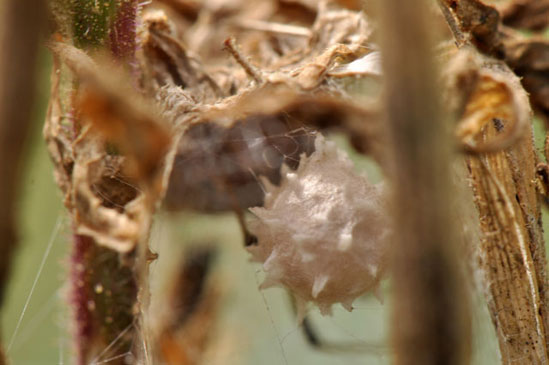
The brown widow can easily be identified by the presence of its distinctive egg sac, a spiky ball made of silk. Locally, the brown widow is often referred to as the black widow due to the resemblance.
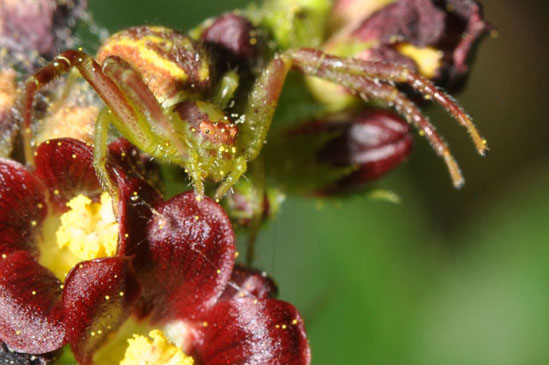
Thomisidae are called crab spiders based on their appearance. They typically sit on plants and ambush their prey. This particular species is colored to match the flowers where it lies in wait.
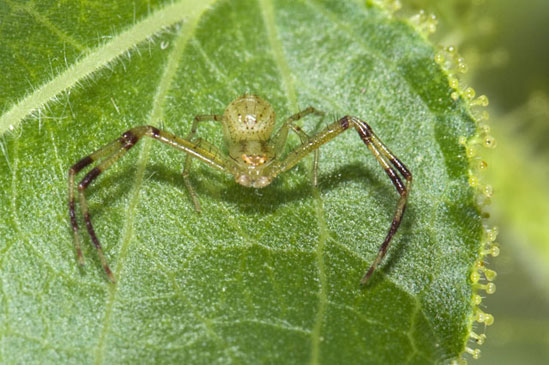
Another thomisid awaits prey on a leaf in a grassy area.
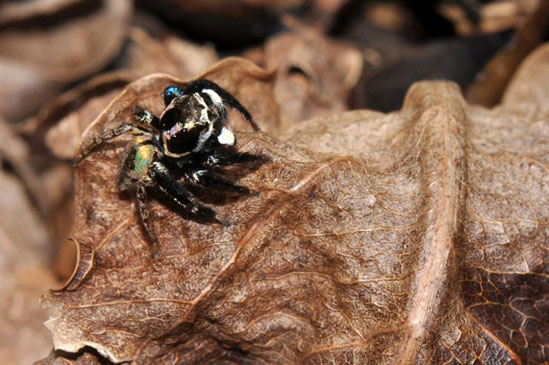
Jumping spiders (family Salticidae) are quite acrobatic and sometimes very colorful. This one was waving its white pedipalps, perhaps in an attempt to attract prey.
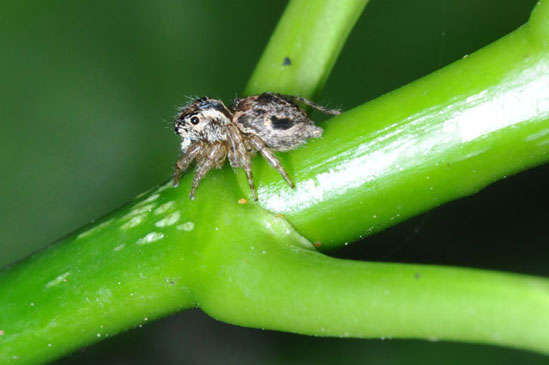
Another jumping spider, with an intricate, but less colorful pattern. Their excellent eyesight includes four types of color receptors, allowing them to process a wider spectrum of light.
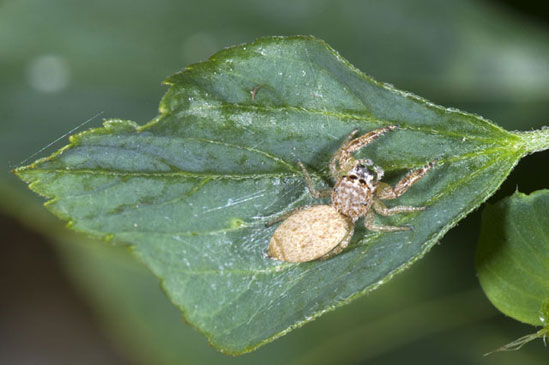
In this jumper, the large anterior median eyes (i.e., middle front eyes) are clearly visible, which is a distinguishing feature of this family and crucial to their hunting ability.
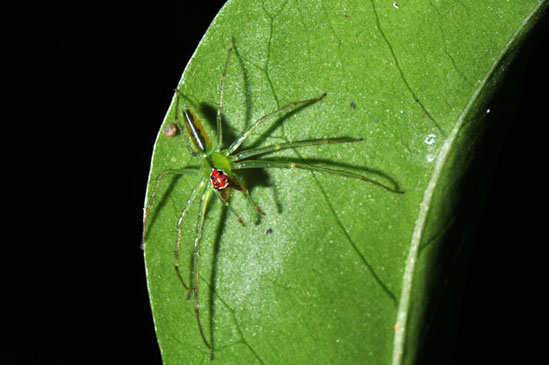
This green jumper (Lyssomanes sp.) is quite similar in body shape to the lynx spiders (Oxyopidae), but the large anterior median eyes identify it as a salticid.

The lynx spider Oxyopes salticus has eyes arranged in a hexagon pattern and spikes on its legs, traits it shares with other Oxyopids.
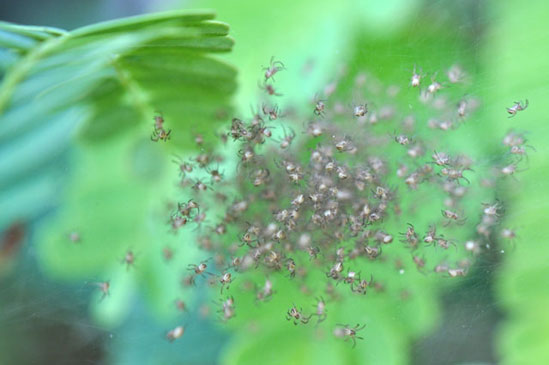
It is always a treat to see a cluster of spiderlings (baby spiders). Depending on the species, the mother may protect the egg case, or even carry the young on her back.
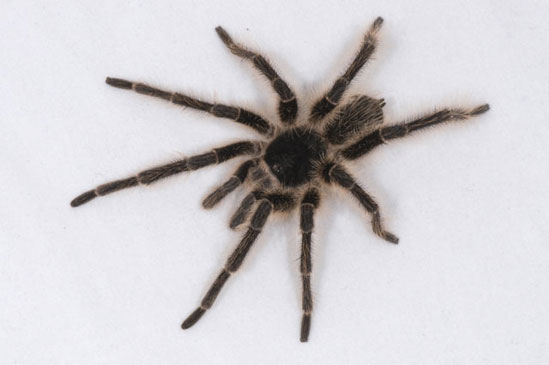
The subfamily Ischnocolinae includes various species of relatively small, fast-moving tarantulas like this one (Holothele sp.). Although the leg-span of this individual was over 10cm when spread, it often folded its legs over itself to protect its body.
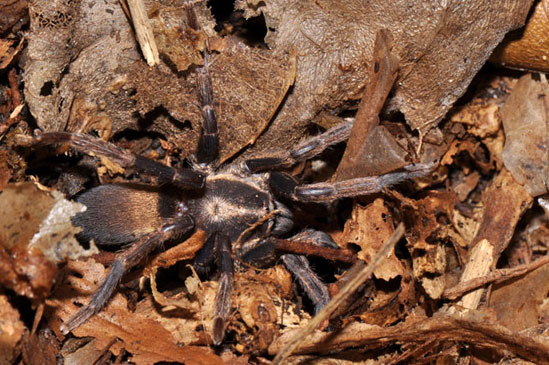
This ground-dwelling spider (family Barychelidae) is a very small type of tarantula, usually 2-3 cm in length. It is usually found under logs or stones during the day, although many species climb trees at night to hunt.
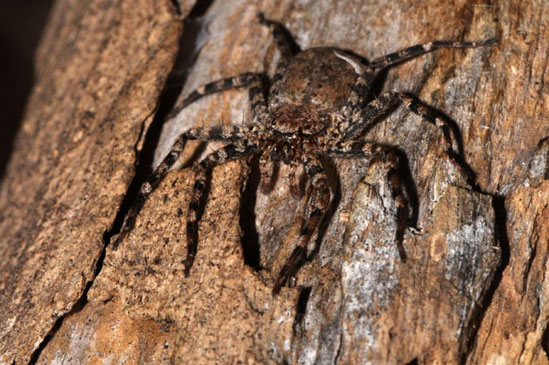
This wall crab spider (family Selenopidae) is quite common under rocks and logs during the day. At night they may be seen climbing on walls.
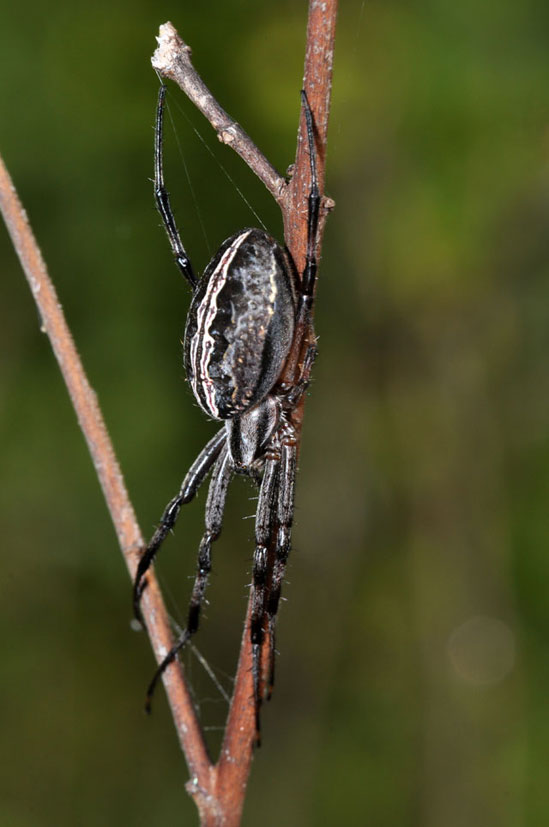
This large and rather striking araneid, perhaps of genus Neoscona, does not seem to be particularly common on the island. I have only seen it once or twice.
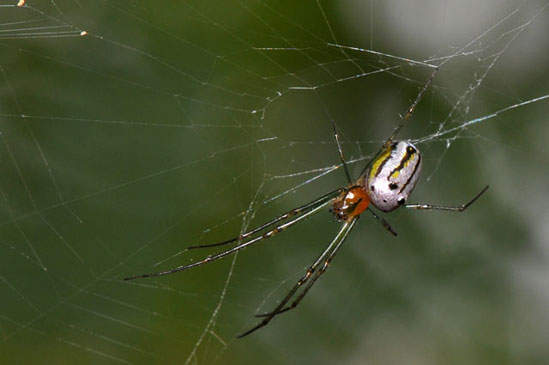
This orb weaver (Leucauge sp., possibly regnyi) is primarily found in mountain forests, where it can be quite common.
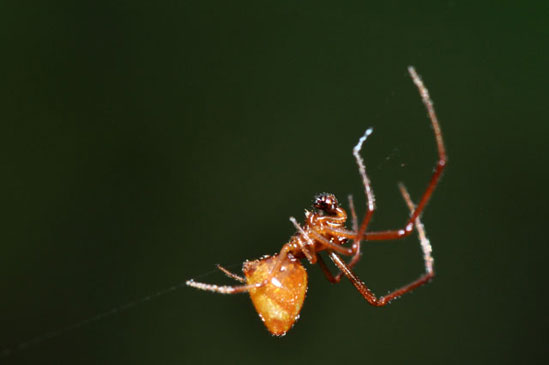
This dew-drop spider (Argyrodes elevatus) is a kleptoparasite, living at the edge of larger orb-weaving spiders and stealing their prey.
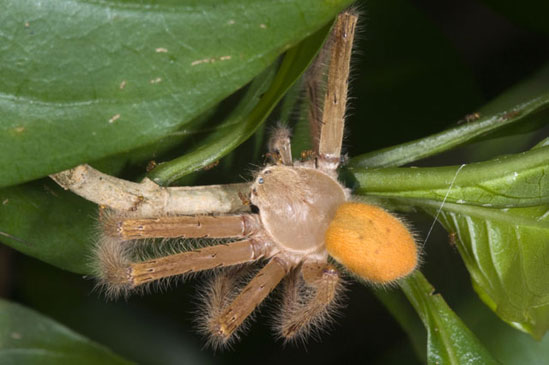
I found this recently deceased spider still clinging to a bush. It is likely from the family Sparassidae, known as the huntsman spiders or giant crab spiders.
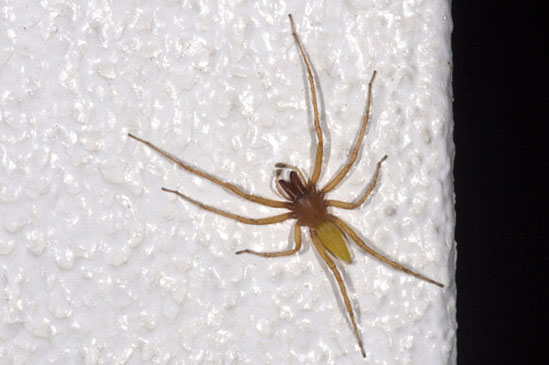
Seen on my wall at night, this spider is likely a sparassid as well. Although smaller than most tarantulas, sparassids can be quite large, but they are typically not regarded as dangerous.
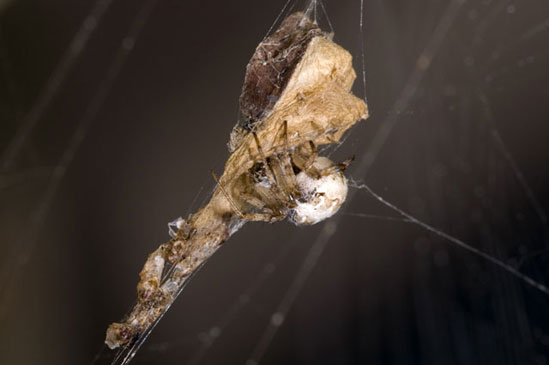
This spider, probably of the genus Metepeira, creates a retreat in its web by weaving leaves and other debris together.
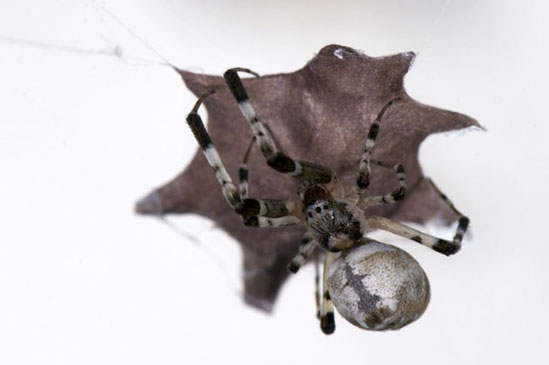
This orb-weaver (family Araneidae) was guarding her egg sac. Along with most of the other spiders on this page, I found her at the abandoned ruins of La Belle Creole resort.
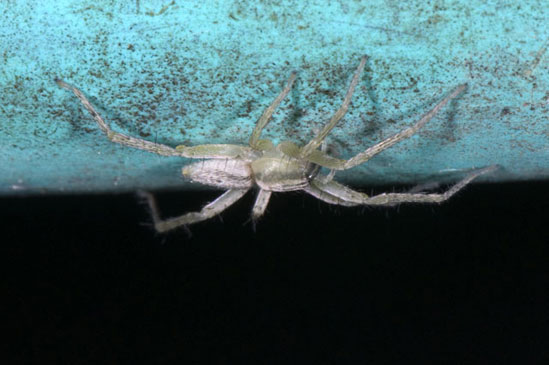
This spider, probably an oxyopid, or lynx spider, was also seen at La Belle Creole. It would seem that human architecture in the absence of humans offers a very desirable environment for spiders.
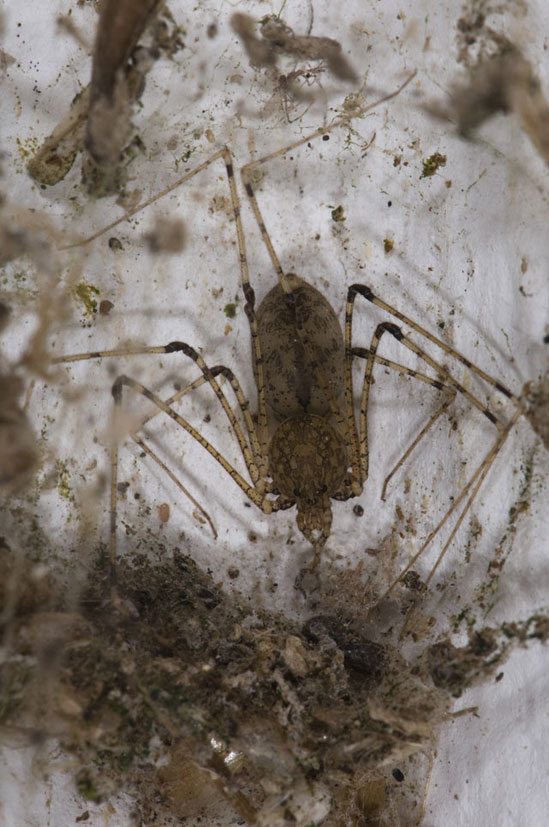
The tropical spitting spider (Scytodes longipes) captures its prey by spitting a sticky and poisonous venom, which immobilizes its prey.
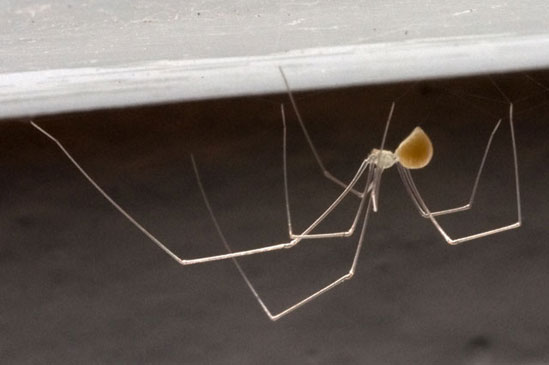
This extremely dainty member of family Pholcidae, which are often referred to as daddy long legs, was found in our home.
